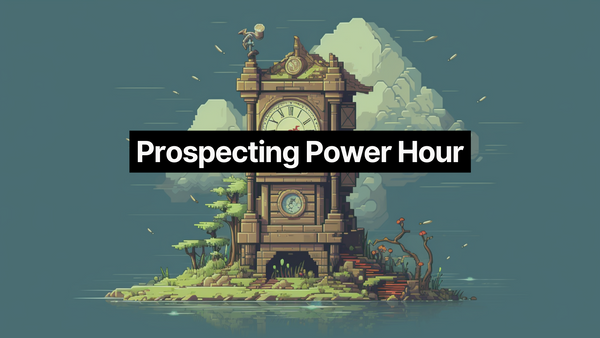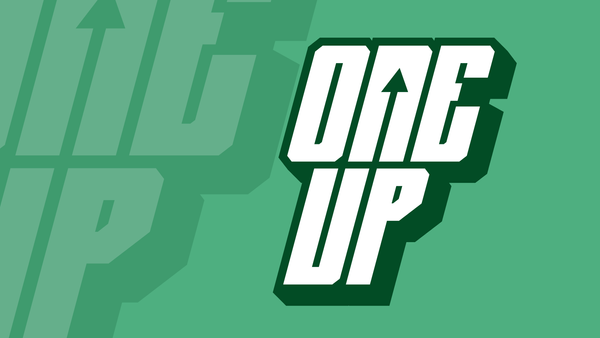What’s the biggest obstacle to building momentum as a seller? I believe it’s how we structure our day. Or honestly, how we don’t.
I notice a lot of reps will pick up the phone and they'll have a few conversations. And then they'll go have a drink of coffee and then they'll go pick up the phone again. And then they'll go in the CRM and then they'll pick up the phone. And then they'll see a LinkedIn comment and then they'll lose themselves in the feed for 17 minutes. And so on.
It’s a really vicious cycle of context-switching and it doesn’t allow you to do your best work. Psychological research shows context-switching is the enemy of focus. Dr. David Meyer, a researcher, says “even brief mental blocks created by shifting between tasks can cost as much as 40 percent of someone's productive time.”
Add up the Slack messages (and that nightmarish notification sound), team calls, and the endless barrage of social media… it’s no wonder it can feel hard to sustain momentum, let alone get started.
What follows is a simple structure I use to set up my prospecting efforts each day and week.
The Two-Hour Power Hour
First off, a prospecting power hour is actually two hours. Ironic, I know, and I’m not trying to mislead you. But you have to set yourself up for success first, then run outreach, and then take time to reflect on what went well (and what didn’t).

The general structure goes like this:
- Preparation, list building, and list research (30 minutes)
- Prospecting and outreach on one channel (60 minutes)
- Reflection and admin (30 minutes)
The most important rule is to never run these prospecting power hours back-to-back. I do at least one, but usually two per day. You can do three if you’re feeling particularly inspired, but always provide space for a mental or physical break.
Preparing for Your Power Hour
The main question you need to answer is: “who should I be talking to?” I prefer to prioritize my list into three buckets.
- Priority leads. These are the leads I've been already been talking with. They're either easy to reach via phone/email/social or I've already had a couple conversations with them. They're priority!
- Working leads. These are the leads I've contacted at least once, but haven't gotten much in response. This is always a bigger bucket than priority leads – I try to keep a minimum of 50 leads at any given time. It gives me the consistency I need to spend time engaging vs. just searching or researching.
- New leads. These are the leads I know I need to contact at target accounts but I haven't reached out yet. I also keep this to around 50 leads as well so I can easily replace the working lead list if they respond.

Priority leads are the most important. If you’re continuing that conversation, you can gather more information and get closer to booking a meeting. Sometimes your value hypothesis is off, so you need to update it. Or maybe your guesstimate about the company was wrong so you have to tweak it. That’s why I start with continuing conversations.
The other two buckets are pretty straightforward, but I leave new conversations for last. If I’m really trying to build momentum, I need to prioritize the people who are already in my universe.
What I’m assembling is a shortlist of names I can reach in my actual hour of prospecting. If I only have a few names in my priority leads bucket, I’ll add in working and new leads to reach a reasonable number - usually up to 50, but it can be more if I’ve calculated my numbers to determine how many leads I need in order to attain quota.
Before I start running outreach, I have assembled the following:
- Name and contact information
- Relevant research and notes about the individual and the account
- Goal of the conversation
Running Your Outreach on One Channel Only
I don’t switch between channels during my 60 minute prospecting block. If I’m using social to prospect, I’m only on LinkedIn. If I’m calling, I’m only on the phone. If I’m emailing (usually only cold email), I’m only emailing.
This makes the prep phase really focused: if I’m only going to call someone, what do I need to know to have a good conversation? If I’m only going to engage on LinkedIn, what do I need to have before I comment or send a DM?
I’ve also noticed that sticking to one channel builds momentum. If you’ve built a pretty tailored list, you’re going to have similar conversations across the entire hour. It makes the conversation flow naturally and keeps focus.
Reflecting and Admin Work
After the 60 minutes of prospecting, I’m spending 30 minutes on wrap-up. That wrap-up comes in two phases: first I’m reflecting on the prospecting hour, then I’m doing data entry.
When reflecting, I’m using a sales journal to write down answers to questions like:
- What went well? What seemed to resonate?
- What didn’t go the way I planned? Why did it miss?
- What could I have done better?
If a tactic proves effective, double-down. If you’re not getting the results you expect, play around with your process and try something different. I’m taking those lessons into the next prospecting power hour.
One important question I'm always asking is: did I build my list properly? Sometimes I miss on my targeting and qualification criteria and I need to refine my list for my next prospecting power hour. This makes the learning process an experiment: each power hour teaches me the best way to do the next one.
The other phase is data entry. It’s tough to remember everything at the end of the day (or the end of the week) based on the conversations you have. It’s also a great moment to follow through on any follow-up action items from your prospecting hour, like sending materials you promised. Take the time now to keep your CRM up to date.
Building Momentum
With this structure, I feel a new level of momentum every week. Even if I’m only running one Power Hour per day, I’m continuing high-priority conversations and starting new ones when necessary. I’m staying on top of my activities. And when I’m learning what works (and what doesn’t), I’m logging it somewhere for my own sanity.
If you want to learn more about this process, check out 124. 5 Ways to Book a Meeting Today.




